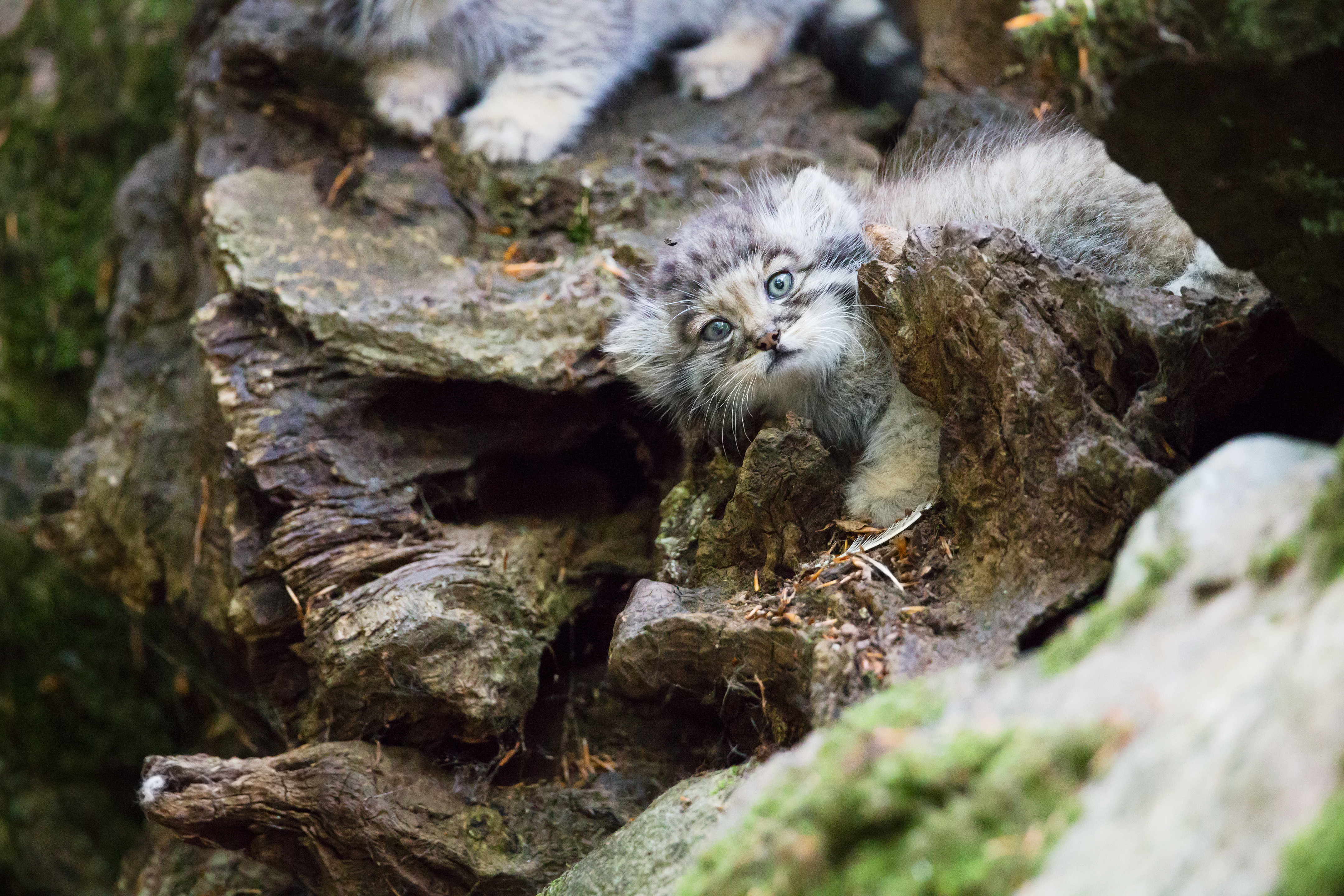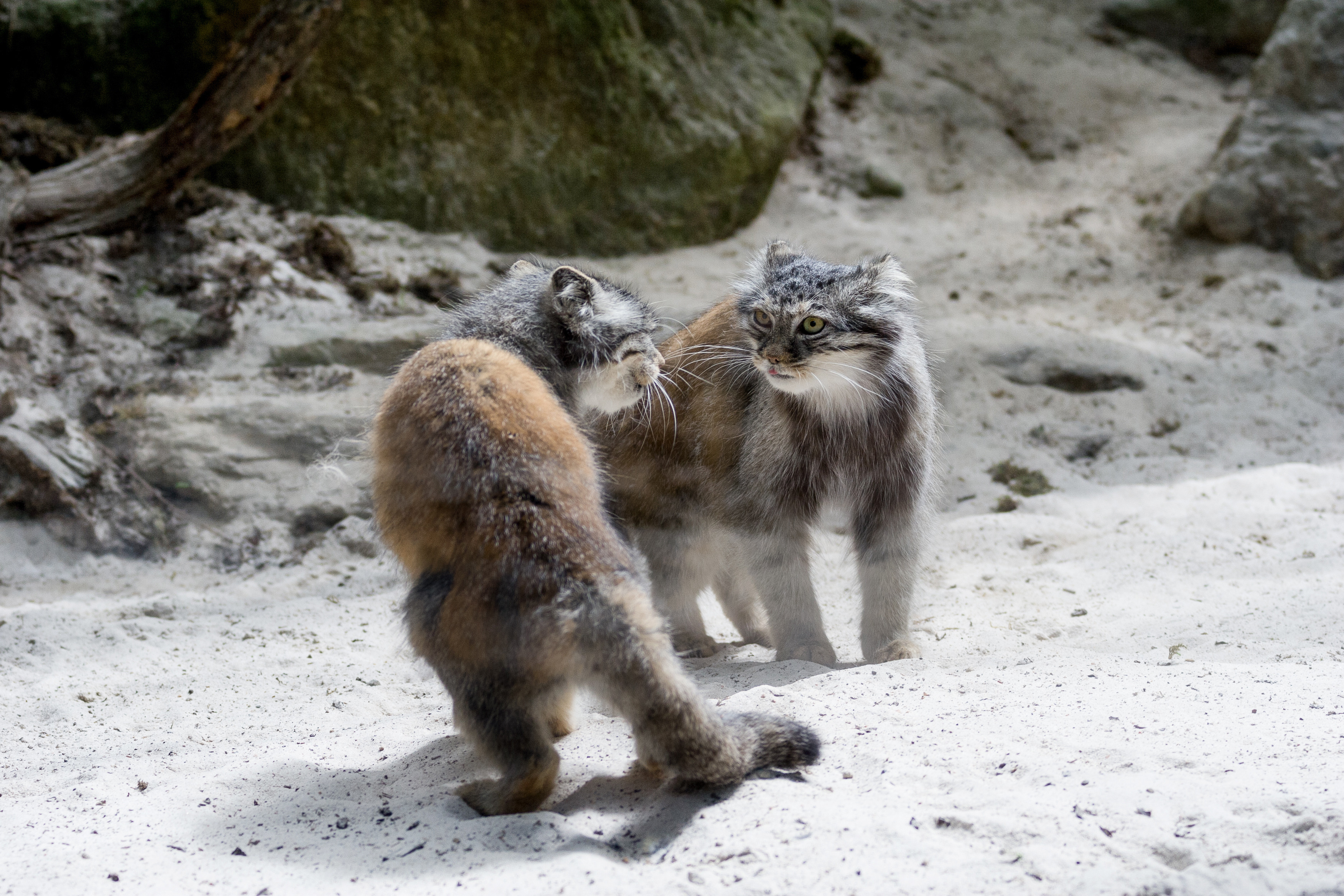Often described as the world’s grumpiest cat due to its perpetually stern expression, the Cat Manul, scientifically known as Otocolobus manul, is a fascinating creature of the Central Asian steppe. This unique feline, also referred to as Pallas’s cat, recently gained further attention through BBC One’s Frozen Planet II, highlighting its resilience in harsh environments.
While its official common name is Pallas’s cat, in honor of Peter Simon Pallas, the naturalist who first described the species in 1776, the term “cat manul” is increasingly popular in online searches. Therefore, we will primarily use “cat manul” throughout this exploration of this remarkable animal. Other common names include steppe cat and rock wildcat, all pointing to its wild and rugged nature.
Where Does the Cat Manul Roam?
The cat manul’s distribution, though widespread, is fragmented across the vast grasslands and mountainous steppes of Central Asia. Their territory spans countries including Iran, Afghanistan, Pakistan, and northern India. However, the core populations of cat manuls are found in Mongolia and Russia. Remarkably adaptable, these felines thrive at elevations reaching up to 5,600 meters.
What is the Cat Manul’s Habitat?
Cat manuls are creatures of the steppe and grasslands, seeking shelter in abandoned marmot burrows and natural rock cavities. Their coat, a blend of silvery and orangey-buff hues, serves as exceptional camouflage within these sparsely populated, often inhospitable landscapes. This coloration allows them to blend seamlessly with the terrain, crucial for both hunting and evading predators.
Observing Cat Manuls in Captivity: UK Locations
For those in the UK interested in seeing a cat manul, several wildlife parks offer the opportunity. Cotswold Wildlife Park celebrated the first-ever birth of cat manul kittens at their zoo in August 2022, born to parents Tull and Penelope. You can also find cat manuls at Port Lympne Safari Park, The Big Cat Sanctuary in Kent, and Banham Zoological Gardens in Norfolk. These locations play a vital role in conservation awareness and, in some cases, breeding programs.
How Large is a Cat Manul?
The cat manul possesses a sturdy build, measuring between 65 and 95 cm in length from nose to the tip of its notably thick and bushy tail. The tail itself accounts for roughly half of its total body length, contributing to its stocky appearance.
How Tall is a Cat Manul?
Standing at a height of 30 to 35 cm, the cat manul has relatively short legs. This physical trait is more advantageous for ambush predation and short bursts of stalking rather than prolonged running. Its incredibly dense fur coat, a critical adaptation to survive the frigid Central Asian climate, significantly enhances its perceived size, making it appear larger than it actually is.
Adaptations to Cold Climates: How the Cat Manul Thrives in Freezing Temperatures
The cat manul is perfectly engineered for survival in extreme cold. Its characteristically flattened ears are shielded from the biting cold by the same dense fur that blankets its entire body. Furthermore, its broad paws act as natural snowshoes, distributing weight evenly across snow, and providing insulation from the frozen ground. For added warmth, the cat manul can wrap its voluminous tail around its body, creating an extra layer of protection against the elements.
A remarkable adaptation is the cat manul’s well-developed nictitating membrane, or third eyelid. This acts as a protective shield for the eyes against both extreme cold and the frequent dust storms prevalent in their habitat.
 Pallas cat kitten playing. © kjekol/Getty
Pallas cat kitten playing. © kjekol/Getty
Cat Manul Reproduction: Kitten Litters and Development
Cat manuls typically produce litters ranging from one to six kittens, with three or four being the most common size. Newborn cat manul kittens are covered in a dark, woolly coat, which they shed around two months of age. By four to five months old, these kittens achieve independence, venturing out on their own.
Female cat manuls have a limited breeding window, coming into season for only two to four days annually. Mating occurs between December and March, and after a gestation period of 66 to 75 days, kittens are born between late March and May. Cat manuls reach sexual maturity relatively quickly, at approximately 9 to 10 months old.
The Cat Manul Diet: What Do They Eat?
As skilled hunters, cat manuls prey on small mammals abundant in their steppe environment. Their diet consists of marmots, pikas, ground squirrels, voles, gerbils, and hamsters. The steppes are known for their high densities of these small mammal populations, providing ample food sources. Ground-dwelling birds, such as sandgrouse, partridges, and larks, also supplement their diet.
When hunting, or when attempting to avoid becoming prey themselves, cat manuls exhibit a behavior known as ‘periscoping’. This involves cautiously raising their head above their hiding spot to survey their surroundings and monitor the location of their quarry or potential threats.
Cat Manul Lifespan and Predators in the Wild
In the wild, the lifespan of a cat manul is around eight years. However, under human care, they can live longer, with the oldest recorded individual reaching 12 years. They face a high mortality rate, particularly among kittens, with an estimated 68% not surviving to establish their own territory.
Predators of the cat manul include eagles and other raptors, grey wolves, domestic herding dogs, and red foxes. Tragically, humans also pose a threat. Cat manuls are hunted for their pelts, particularly in Mongolia where hunting is legal, and in China with a special license. They are also frequently killed unintentionally when mistaken for marmots by hunters. Furthermore, in some regions like Mongolia and Russia, parts of the cat manul are used in traditional medicine.
 Pallas cats are territorial. © eli77/Getty
Pallas cats are territorial. © eli77/Getty
Threats to Cat Manul Populations
The primary threats facing cat manul populations are habitat degradation and fragmentation. These are largely driven by increasing livestock grazing, the conversion of steppe grasslands into agricultural land, infrastructure development, and the extraction of natural resources. These activities break up their habitat and reduce available prey.
Hunting also remains a significant threat, both for their pelts and for use in traditional medicine, as well as through accidental killings.
Cat Manul Conservation Status: How Many are Left?
Accurately estimating wild cat manul numbers is challenging due to their wide distribution and low population densities across vast areas. However, the IUCN (International Union for Conservation of Nature) estimates a mature population of approximately 58,000 cat manuls. Despite a declining population trend, the species is currently classified as Least Concern on the IUCN Red List of Endangered Species. Continued monitoring and conservation efforts are crucial to ensure the long-term survival of this unique and resilient feline.
Main image: Cat manul lives in the cold and arid steppes of central Asia. © kjekol/Getty

